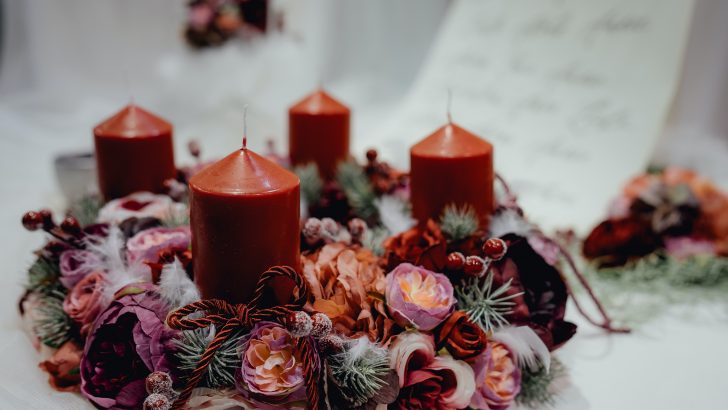Advent is a period of anticipation and preparation, writes Ruadhán Jones
Advent begins this Sunday, November 29. It’s no secret as to what it’s about – preparing for the arrival of Christ. Because it’s so obvious, because it happens every year, we can overlook the wonder of his coming. But this year we may be more disposed to attend – over the past nine months, we have had extensive experience of waiting in a world without the Eucharist.
None of this generation of Irish Catholics will have experienced a period without Christ – here reference to the Penal period is relevant. “Like the daily manna that ¬foreshadowed it, or the Lord’s mercies that are renewed every morning,” wrote Catholic writer Patricia Snow on First Things, “the Eucharist for a minority of ¬contemporary Catholics has never been an occasional dessert or an exceptional feast, but daily bread, food for ¬ordinary time, food one can live on, day in and day out, as some saints did in fact live on it, to the exclusion of other nourishment.”
Now, however it has become just what it always was – an exceptional feast. For now, we can’t gather in his name to eat of his flesh and drink of his blood. All we can do is wait and prepare ourselves for the “love affair that knows no distinction between bodily and spiritual appetites”.
Christ in History
Having experienced this perpetual advent, what can we learn from it? What can we bring into the Advent season itself? Beginning this year on November 29, we will have 25 days to prepare ourselves for the Lord.
Advent has a threefold focus, according to Catholic author Jennifer Gregory Miller: “Contemplating him in history at Bethlehem; receiving him in mystery in the Eucharist; and our personal preparation for his Second Coming and majesty at Parousia.”
Of these three, one is currently barred to us, so perhaps now is a time Christ is calling us to focus on the other two. This week I will focus on how to attend to Christ in history; I will write about preparing ourselves personally another time.
We know what the world misses without Christ, having had a taste of it this year. So too did the Jewish people. The Old Testament is full of laments for God’s absence, for the wickedness of the world and the apparent meaningless of existence. All is grasping at wind, all is vanity – these are the preacher’s words in Ecclesiastes.
Given that the history of the Jewish people is so integral to ours, perhaps this would be a good year to read up on the Old Testament. It’s a book which we tend to neglect because the New Testament expresses so much of our Faith and because the Old has connotations of harnshness. Works such as A Catholic Introduction to the Bible: The Old Testament by Brant Pitre or Bishop Robert Barron’s David the King provide thematic and historical approaches to the Old Testament which are very fruitful.
We know what the world misses without Christ, having had a taste of it this year”
Equally, a book or film of the life of Christ can be an excellent way to consider his work in the world. The 1970s TV version Jesus of Nazareth is available online, as well as a modern telling which gives interesting detail of the Jewish world – The Chosen. These being multi-episode series, they could be spread out across the Advent season.
The Liturgy
“Advent holds the key to preparing properly for Our Lord’s saving action in history, which we relive throughout the Liturgical Year,” writes Jennifer Gregory Miller in her book Liturgical Year Vol. 1: Advent. One of the simplest ways to understand the coming of Christ in history is to take part in the liturgical year. Though we cannot attend Mass, we can still turn to his word either through online Masses or reading them ourselves.
Try to be attentive to what the liturgy is telling us about Christ’s coming. Depending on how much time you have, you could commit to reading the readings every day, or perhaps watching an extra Mass every week. In particular, ask yourself how the readings from the Old Testament relate to then New, and to our own lives.
During Advent, the prophecies of Isaiah are read frequently, and all of the readings focus on the key figures of the Old and New Testaments who were prepared and chosen by God to make the Incarnation possible: the Blessed Virgin Mary, St John the Baptist, St Joseph, Ss Elizabeth and Zechariah. “The expectancy heightens from December 17 to December 24 when the Liturgy resounds with the seven magnificent Messianic titles of the O Antiphons,” writes Ms Miller.
The liturgy teaches us how to wait and prepare for the Lord’s arrival, both in his incarnation and his second coming.
Advent calendars
Another way we can remind ourselves of Christ’s arrival in history is to mark the passage of time. There’s a ready-made tradition, which many practice already – the advent calendar and the wreath. Both of these can be aesthetically pleasing and enjoyable ways to make the Advent season concrete in our domestic church.
Both are easy to make at home, though the calendar needs less materials. All you need for the calendar is cardboard, scissors, glue and a marker or pen. Mark the days with little doors that open on pictures and symbols and Scriptural texts noted by chapter and verse.
You could read these aloud in the evening as part of night prayer. Or, in keeping with our focus on history, you can choose our own Old Testament texts, perhaps those we read to accompany the figures on our Christ candle, and make your own Advent calendar for keeping track of them.
Decorating the calendar with little ornaments or images from Bethlehem can help draw us into the physical world into which Christ entered. Using coloured paper, these can easily become bright and vibrant signs of the Christmas season.
Advent wreath
The Advent wreath is a German tradition now popular across the world. With a circular base which houses the four candles symbolising the four Sundays of Advent, it is an apt reminder both of eternity – the circle – and time passing – the four candles burning down and marking the passage to Christmas.
The advent traditions do not change much from year to year, but we can look at them in new light”
There’s always great excitement in our house as we light each candle, knowing that Christmas is drawing nearer. Wreaths vary greatly from house to house, depending on the time and resources you have to hand. Being out in the country, our wreathes are mixed with holly and evergreens, the colours of Christmas.
The basics will remain the same however: a circular base; candleholders; greens; candles and decorations. Bases don’t have to be homemade, they are a variety of plain bases which can be decorated in your own way. I recommend visiting Jennifer Gregory Miller’s blog on Catholicculture.org for more detailed instructions and a wealth of ideas.
The advent traditions do not change much from year to year, but we can look at them in new light. This year, while we wait for our own return to Christ, consider how the various symbols remind us that God’s gift is to be worked out “in the fullness of time”, after much preparation. This preparation we undertake each Advent, waiting for the joy of his arrival.


 Ruadhán Jones
Ruadhán Jones
